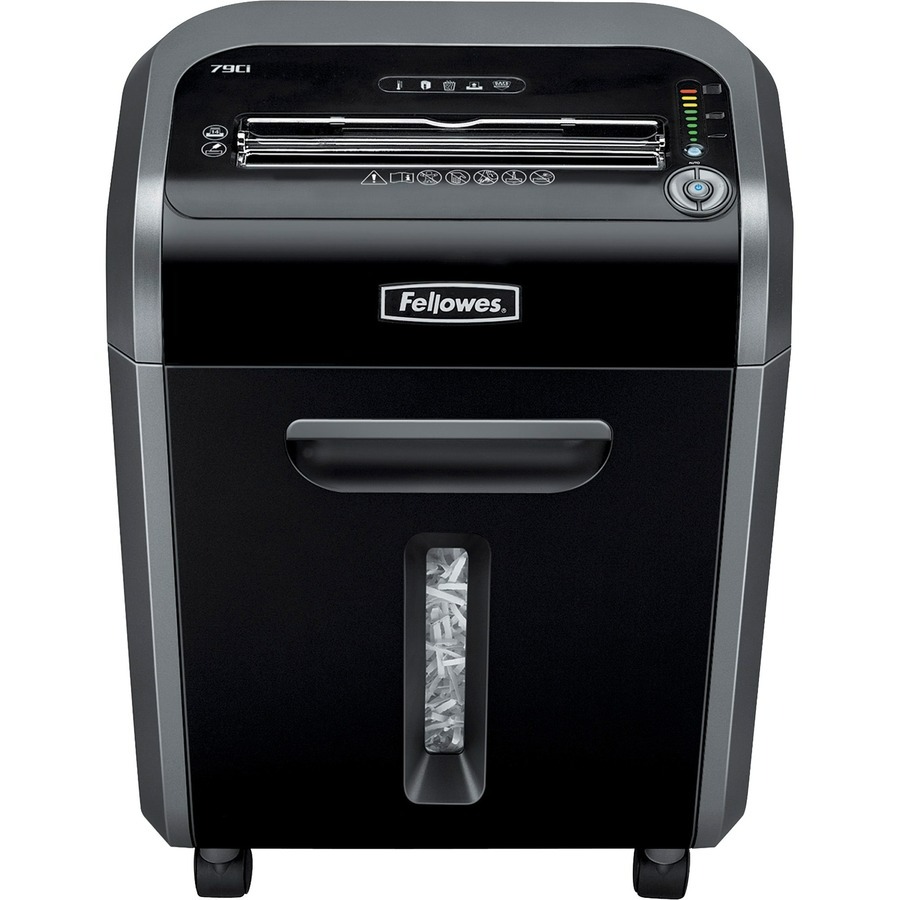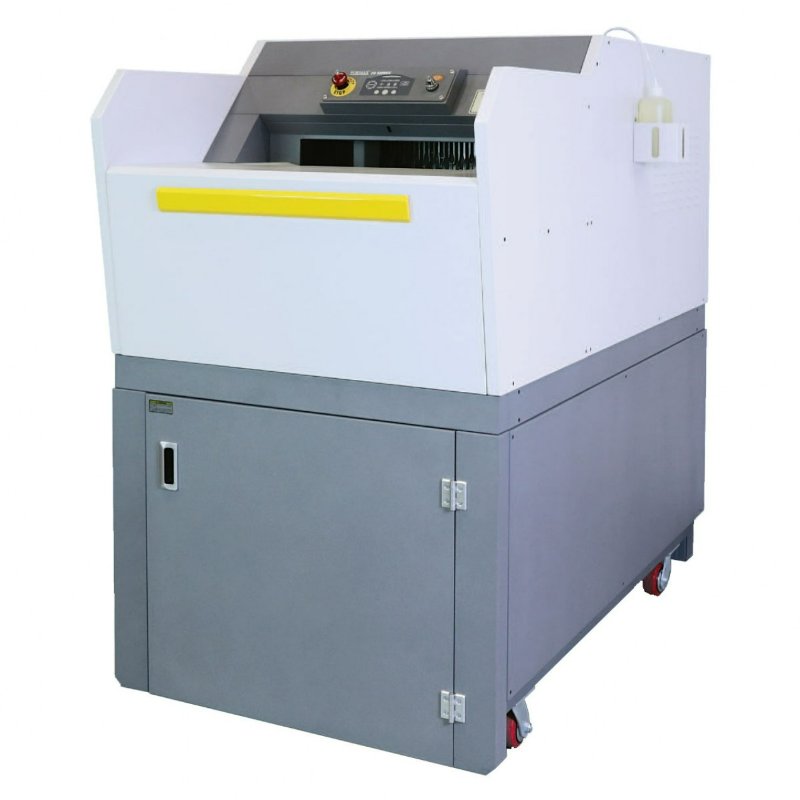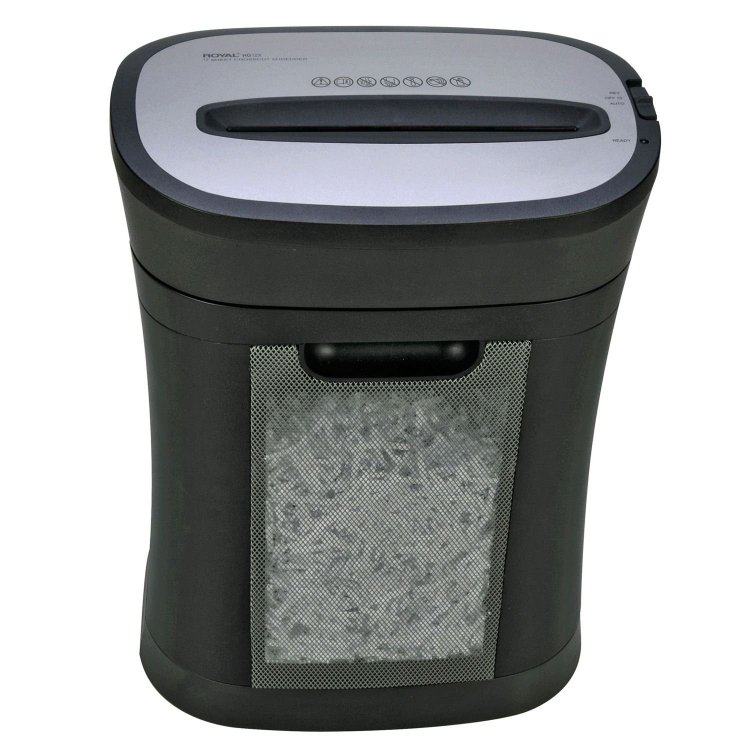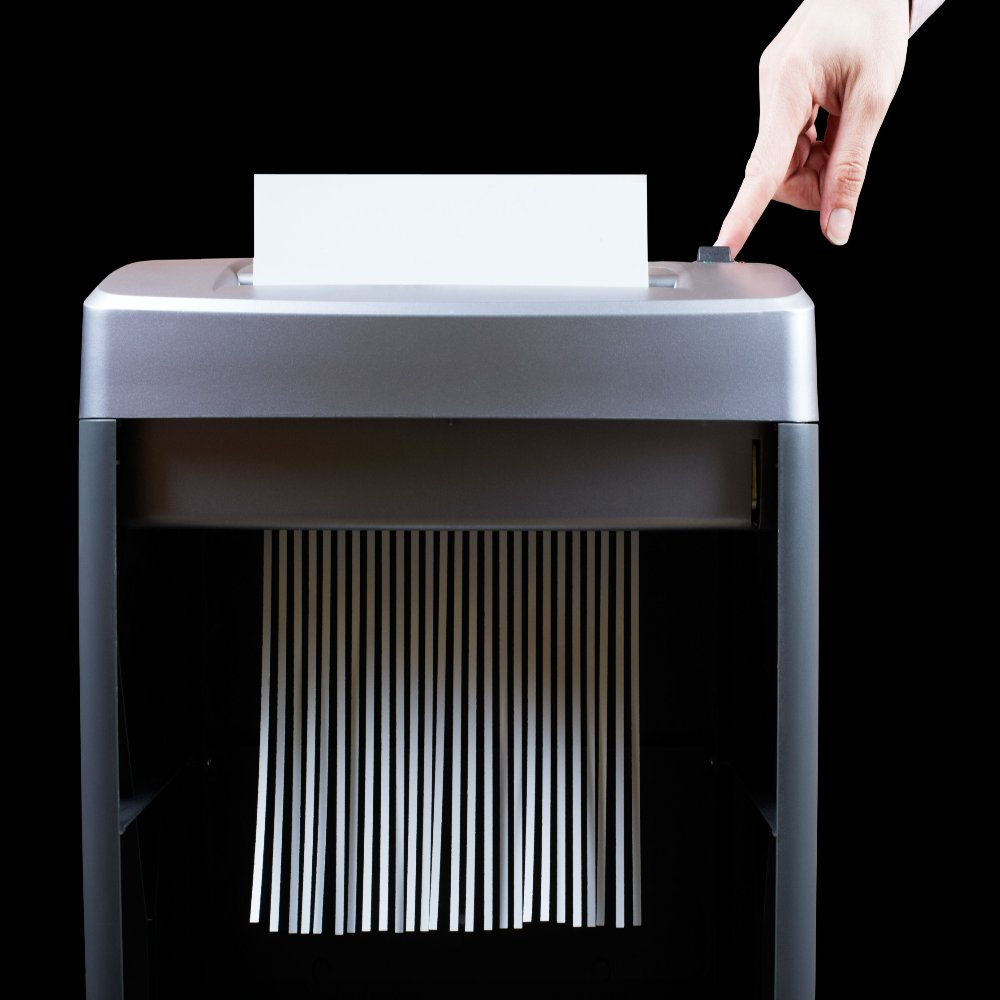Important Features to Consider in a Paper Shredder
Choosing the best paper shredder involves considering several key features. These will ensure that the shredder meets your specific needs and provides top-level security. Here’s what to keep in mind.
Types of Shredding Cuts
Different shredders offer various types of cuts, which impact security and shredding speed. Strip-cut shredders slice documents into long, narrow strips. They work quickly but offer the least security. Cross-cut shredders, however, cut papers into short, confetti-like pieces, providing better security. The most secure, micro-cut shredders, pulverize documents into tiny particles, making them ideal for highly confidential documents.
Security Levels: From P-1 to P-7
Shredders are classified into security levels ranging from P-1 to P-7, based on the DIN 66399 standard. P-1 offers the lowest security, typically with strip-cut shredding, suitable for non-sensitive data. Levels increase in security up to P-7, which is approved by governmental agencies for shredding top-secret documents.
Shredding Capacity and Speed
The shredding capacity refers to how many sheets a shredder can handle at once. Basic models may only manage a few, while heavy-duty versions can shred hundreds in quick succession. Speed is similarly variable. Assess how much and how quickly you need to destroy documents to determine the best paper shredder for your needs.
Additional Safety Features
Safety is crucial, particularly in environments with children or pets. Look for shredders with automatic shut-off capabilities when fingers are too close to the feed opening. Other safety features include overheat protection and safety locks. These features help prevent accidents and ensure a safe operation environment.

Top Rated Paper Shredders of the Year
In the quest to find the best paper shredder, it’s essential to consider the latest top-rated models of the year. These shredders have garnered praise for their efficiency, security features, and user-friendly designs. Whether for personal, home office, or commercial use, the following categories highlight shredders that lead the market.
High-Security Shredders for Sensitive Documents
For those handling highly sensitive documents, high-security shredders are a must. Models rated at P-5 to P-7 security levels are ideal as they turn papers into micro-cut particles that are nearly impossible to reconstruct. High-security shredders are often used by government agencies and for corporate espionage prevention.
Budget-Friendly Shredders for Home Use
Not all shredding needs are the same, and home users typically require a more cost-effective solution. Budget-friendly shredders typically feature cross-cut technology offering adequate security for most home applications. They provide a balance between performance and affordability, making them suitable for everyday bills and other non-sensitive documents.
Heavy-Duty Shredders for Office Environments
Offices with high-volume shredding needs should invest in heavy-duty shredders. They can handle a higher capacity of sheets simultaneously and work at greater speeds. These shredders are engineered for continuous use and durability, ideal for shredding through stacks of paper without the risk of jams or malfunctions. Additionally, they may come with features like anti-jam technology and energy-saving modes, which are crucial for busy workplace settings.
The Difference Between Strip-Cut, Cross-Cut, and Micro-Cut Shredders
Understanding the key differences between strip-cut, cross-cut, and micro-cut shredders is essential when choosing the best paper shredder for your needs. Here’s a simplified breakdown to help you make an informed decision.
Strip-Cut Shredders
Strip-cut shredders are the most basic type of shredder. They cut papers into long, vertical strips. This type offers the lowest level of security, making it suitable for general documents that don’t contain sensitive information. The simplicity of its mechanics allows it to shred documents rapidly, making it ideal for scenarios where volume shredding is more important than confidentiality.
Cross-Cut Shredders
Cross-cut shredders provide a higher level of security compared to strip-cut models. They cut documents diagonally from both corners, producing smaller pieces of paper. This makes it more difficult for shredded documents to be reconstructed. Cross-cut shredders strike a balance between security and speed, making them a favored choice for small business or personal use where moderate security is needed.

Micro-Cut Shredders
For those who need the highest security available, micro-cut shredders are the best option. They shred papers into confetti-sized particles, offering superior protection against data theft. The tiny particles ensure that reconstructing documents is virtually impossible. Micro-cut shredders are ideal for destroying highly confidential documents such as financial statements, business contracts, or personal documents containing sensitive information.
Factors to Consider for a User-Friendly Paper Shredder
When searching for the best paper shredder, user-friendliness is a critical factor. This includes easy operation, minimal maintenance, and convenient features that enhance the user experience. Here are the key aspects to consider:
Easy Operation and Maintenance
The best paper shredder should be simple to operate. Look for models with intuitive controls and clear instructions. Maintenance should also be straightforward. Select shredders that are easy to clean and require minimal upkeep, such as regular oiling. This ensures longevity and consistent performance.
Quiet Shredding Options
Noise level is an important consideration, especially in shared spaces. Opt for a paper shredder that operates quietly. Many modern shredders are designed to minimize noise, allowing you to shred documents without causing disruption. This feature is particularly valuable in office settings.
Bin Size and Ease of Disposal
The size of the shredder’s bin influences how often it needs to be emptied. Choose a shredder with a bin size that matches your shredding needs. Larger bins are convenient for high-volume shredding, reducing the frequency of disposal. Ensure the bin is easy to access and empty, which adds to the overall convenience.
Advanced Features in Paper Shredders
To make your document-destroying experience even more efficient, the best paper shredder might come with a set of advanced features. These features not only streamline your shredding process but also enhance the machine’s durability and user-friendliness. Let’s delve into some of these cutting-edge functionalities that are setting the bar higher for paper shredders.
Anti-Jam Technology
Nobody likes a paper jam. It slows down your workflow and can be a hassle to clear out. The latest shredders feature anti-jam technology to prevent this common issue. Sensors detect when too much paper is fed into the shredder and stop the blades before a jam occurs. Some models even auto-reverse to clear potential blockages, saving time and frustration.

Energy Saving Modes
Eco-consciousness goes hand in hand with high performance in the latest paper shredders. Energy saving modes are now a fundamental part of many models, allowing them to power down when not in use. This feature not only reduces your energy bill but also extends the life of your shredder. It’s a win-win for the planet and your pocket.
Smart Functions and Connectivity
In a world where everything is smart, why should your paper shredder be any different? The best shredder may offer smart functions, such as touch panels and indicator lights for full bins or open doors. Some even connect to your home or office network, allowing you to control them remotely. These smart features lend a helping hand in maintaining security and efficiency in your shredding tasks.
The Role of Shredders in Protecting Your Identity and Privacy
In today’s digital age, physical document security remains crucial. Shredders play a vital role in safeguarding personal and corporate information. By destroying papers effectively, shredders prevent unauthorized access to sensitive data. This is essential for protecting your identity and privacy. Identity theft often involves the misuse of physical documents such as bills, bank statements, and personal letters. Using a shredder ensures these documents are unreadable. Additionally, businesses mitigate the risk of corporate espionage. Confidential business information is safely disposed of, ensuring no competitive leaks. Whether at home or in the office, a shredder acts as the first line of defense against data theft. It is an indispensable tool for maintaining privacy and security.
Paper Shredder Maintenance and Care
Maintaining your paper shredder is key to its longevity and performance. Proper care helps prevent issues and extends its life. Here’s how to keep your shredder in top shape.
Regular Cleaning and Oiling
Regular cleaning is essential. Remove paper particles and dust that accumulate over time. Use a soft cloth for exterior cleaning. For interior parts, use a shredder cleaning sheet or a vacuum with a nozzle attachment. This stops build-ups that can cause jams.
Oiling your shredder is just as crucial. It keeps the shredding blades sharp and ensures smooth operation. Apply shredder oil directly or use oil sheets every time you empty the bin, or at least twice a month. This routine maintains optimal shredding capacity and prevents wear.
Troubleshooting Common Issues
Shredders can face issues like jams, overloading, or malfunctioning sensors. To troubleshoot, first, turn off and unplug the machine. Clear any paper jam with reverse function or manually. Avoid overloading by adhering to the shredder’s sheet capacity. Check and clean sensors to ensure they’re not blocked.
If the shredder overheats, allow it to cool down. Most units have a thermal overload protection to alert you when it’s too hot. For persistent problems, consult the manual or contact customer support. Proper troubleshooting can save you from unnecessary repairs or replacements.
